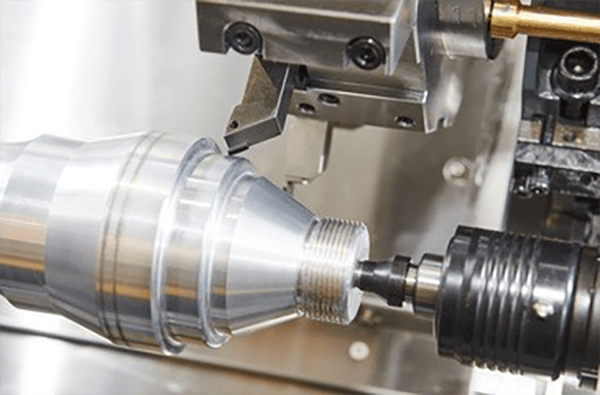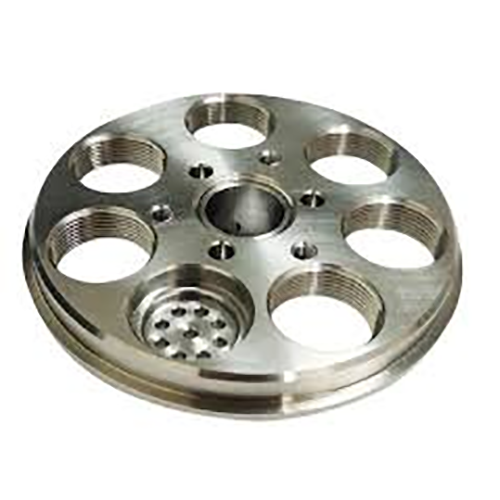
Realizing precise finish on a turned or milled piece is critical.
- CAD annotations convey exact surface criteria for production
- Engineers often specify Ra (average roughness) to numerically define surface irregularity
- Appreciating callout details is key to ensuring product functionality
- Clear finish specification affects lubrication behavior, sliding resistance, and lifespan
- Understanding the notation correctly yields the desired surface result
Precision Principles of CNC Machining

CNC machining represents a game-changing method in production with programmed toolpaths the apparatus generates complex components precisely.
- Automated machining allows fabrication of accurate parts from multiple materials
- CNC’s flexible capabilities match requirements of aerospace and automotive fields
- CNC processes produce uniform parts with high repeatability over runs
From early-stage prototyping through mass manufacturing CNC machining underpins modern fabrication
Understanding CNC Machine Specifications
Decoding CNC machine specifications can feel daunting at first glance
Nevertheless simple study and a stepwise method let you read technical specifications
Set out by finding key metrics: spindle speed, feed settings, positional accuracy, work envelope, controller
All these values combine to influence overall operational ability.
As an example, increased spindle rpm favors soft alloys and higher feed favors throughput.
Comprehending those interactions assists in picking the proper CNC for tasks
Always examine producer technical literature in detail.
Maker resources usually present informative direction and demystify jargon
Understanding CNC Machines: A Complete Overview
Programmed machining equipment comprises computer-managed tools for exact automated fabrication of diverse materials They operate by interpreting digital instructions called G-code to control cutting tools or other actuators.
- Various CNC platforms encompass milling centers, turning lathes, routers, plasma systems
- Machining operations fit metal, plastic, wood, and composite workpieces
- Moreover CNC platforms enable rapid model creation and small-batch production for SMEs and R&D teams
Computer Numerical Control Machines: An Overview
They present marriage of accurate mechanics and advanced control software These versatile tools utilize computer programming to automatically manufacture a wide range of parts from simple components to complex assemblies The core idea is converting digital blueprints into tangible parts.
- Automated machine operation
- Programmed manufacturing process
It comprises controlled axis moves directed by programmed code Production personnel configure feeds and speeds, monitor cycles, and guarantee output quality.
Why Surface Finish Matters in CNC Machining
Realizing specified surface quality in machining is vital It shapes both functional outcomes and outward appearance Stock properties, cutting settings, and finishing operations determine surface result.
A smooth surface finish can enhance the product's durability while a rougher finish may reduce its effectiveness Automated machining presents a spectrum of techniques and tools to accomplish desired finishes.
- By using distinct cutter geometries |diamond tooling|cutting velocit
 y selections to shape surface
y selections to shape surface - Also surface treatments such as grinding and polishing can refine textures
Understanding the relationship between machining parameters and surface finish is essential for achieving optimal results in CNC machining operations.
CNC Machine Basics: From Operation to Applications
This precise method uses computer-guided machinery to sculpt components from diverse substrates They run numerical instructions to manufacture complex shapes consistently Basic knowledge of machine operation, G-code, and tooling selection plays a vital role in success
CNC serves diverse fields including aerospace, automotive, manufacturing, and electronics From intricate propeller parts to exacting mold inserts, CNC produces accurate geometries
Callouts and Surface Roughness for CNC Parts
Correctly specifying finish is vital for CNC-produced components It helps confirm that the product aligns with performance and cosmetic needs Designers typically indicate finish using the Ra (roughness average) metric Measured in micrometers or inches, the number reflects mean surface roughness height.
Evaluate both finish smoothness targets and the operational application before specifying

Generally fine finishes benefit components requiring precision alignment and tolerance
By contrast coarser finishes may be useful where additional grip or friction is desirable
Include unambiguous roughness values in drawings to specify finish demands Specify the Ra metric and note any secondary treatments or special machining steps.
Understand that effective surface annotations are critical to production success
Varieties of CNC Machines and Capabilities
CNC technologies cover several machine formats that handle a range of job types They adopt CAD-to-CAM pipelines to steer cutting tools for precise part manufacture.
- Turning centers form shafts rods and cylindrical forms by cutting along axes
- Routers handle flat panel cutting and profiling for non-metal workpieces
- Plasma machines slice thick steel and ferrous metals rapidly using plasma arcs
Select machinery by weighing material, complexity, and tolerance needs Specialized CNC abilities fulfill industry requirements across sectors from transport to healthcare.
Attaining Top-tier Surface Finish Through CNC
Delivering optimal surface quality is necessary and CNC processes are well-suited to achieve it With exact feed control spindle tuning and proper tool shapes machinists influence finish quality and minimize defects Moreover premium cutters and correct coolant application enhance surface outcomes Deliberate machining strategies and exact setups enable production of components with excellent texture.
Programming Strategies for Surface Finish
Programming mastery of surface parameters is essential for desired outcomes Machining parameter combos such as feed, rpm, and tool geometry set the surface characteristics Meticulous parameter tuning together with suitable coolant use promotes smoother finishes.
- Additionally routine cnc full form machine tool checks and upkeep maintain consistent finish quality Besides that systematic tool upkeep and monitoring ensure sustained surface quality Furthermore regular tool maintenance and inspection are essential for ensuring a consistent and high-quality surface finish over time
- To improve surface outcome account for material, roughness target, and application
- Toolpath simulation enables testing parameter impacts to cut down surface errors
- Plus regular inspection and maintenance of tools copyright finishing standards
